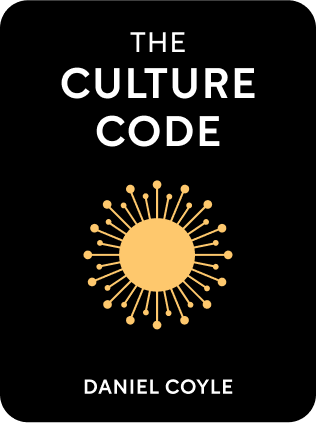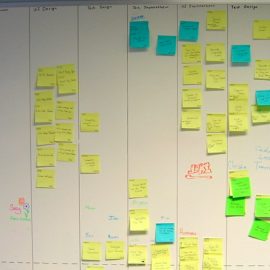

This article is an excerpt from the Shortform book guide to "The Culture Code" by Daniel Coyle. Shortform has the world's best summaries and analyses of books you should be reading.
Like this article? Sign up for a free trial here .
Would you say that your organization has a safe working environment? Why is it important to ensure psychological safety in the workplace?
A safe working environment is critical to effective teamwork. It develops direct communication, honest feedback, and a willingness to go above and beyond through constant signals of belonging.
Learn about the key attributes of a safe working environment and why it’s good for workplace culture.
The Key Attributes of a Safe Working Environment
In a safe working environment, employees are willing and able to speak out, regardless of the hierarchy of the company. The group is concerned with one task: solving problems to promote success. This means that even the low-level intern has the ability to speak to the CEO, which makes them feel secure in their importance to the team. Though they may be a small cog in the machine, they are essential to its operation.
In a safe working environment, team members feel valued. No one wants to feel like they’re not appreciated. Safety lets team members feel like they belong in the group and have something substantial to contribute.
Note: safety does not imply niceness. Sometimes, courtesy must be put aside to allow for direct, unadulterated feedback. However, in a safe working environment, this bluntness comes from a place of care and a genuine desire to develop success.
Belonging Cues. A safe working environment provides a constant stream of belonging cues. These cues create a feeling of safety and comfort within the workplace and address three specific topics: connection, future, and security:
- Connection cues allow team members to feel as though they are supported by the group while being valued as individuals. Connection cues include physical connection, active listening, and small courtesies.
- Future cues let team members know that they have a future with the organization. Future cues include discussions about upward mobility, correlations between team members and model employees, and conversations about long-term goals.
- Security cues let team members know that they have permission to speak up without fear of losing their position. Security cues include the embrace of feedback, the promotion of team opinion, and the acknowledgment of strong work.
Examples of belonging cues include:
- Interactions in close proximity
- Eye contact
- Back-and-forth communication
- Energized conversations
- Open and honest dialogue
- Physical interaction (when appropriate): handshakes, fist bumps, and so on
The Benefits of Psychological Safety in the Workplace
Benefit #1: Chemistry. When team members repeatedly use belonging cues, they develop strong chemistry with one another. It sends a message to team members: you are a part of this team and you belong. This creates magnetic workplaces that nurture efficiency and cohesion. Team members communicate quickly, contribute new ideas regularly, and give their input energetically.
The Allen Curve
Thomas Allen, a professor from MIT, wanted to understand the science behind group chemistry. Through his research, he discovered that successful groups had one thing in common: their desks were in close proximity to one another.
As a result of this discovery, Allen developed a concept he called the “Allen Curve.” The Allen Curve displays the correlation between physical proximity to frequency of communication. Essentially, the closer team members are to one another, the stronger their chemistry and their resulting work.
Benefit #2: Willingness to Go Above and Beyond. When employees feel valued and supported in the workplace, they are willing to go above and beyond, even if the problem at hand is not technically their responsibility. Rather than spending a significant amount of time and energy strategizing, teams dive into issues head-first. They’re even more willing to work after hours to resolve the issues.
The Targeted Advertisements Race
At the start of the 21st century, software engineering companies were in a race to discover the best way to deliver targeted advertisements to consumers—a discovery that could potentially jumpstart a multi-billion dollar industry. The clear favorite was a company called Overture. Valued at a billion dollars, the company was already thriving and hired some of the most intelligent minds in the software and advertising industries.
However, this powerhouse company lost the race to a small company called Google. Though they did not have nearly the same amount of funding or experience and were relatively unknown at the time, Google managed to come out on top and dominate the industry.
How did a company with an obscene amount of talent and seemingly endless funds lose out to a young startup? The small upstart used belonging cues in their day-to-day operations. For instance, they developed connection through full-contact hockey games and developed security through open discussion forums. Employees were willing to go above and beyond for the organization because they felt intrinsically connected to the group. Individuals felt empowered to solve problems that weren’t explicitly assigned to them—one person personally took on a challenge of mismatched ads.
At Overture, on the other hand, employees had no desire to perform outside of their given positions because the leadership failed to develop a safe and connected work environment.
Google won, not because it was the more intelligent company, but because it was the culturally safer company.
Benefit #3: Connection Despite Tension. Even in times of incredible tension, employees can develop and maintain interconnection. Groups will experience highs and lows—that’s just a fact of life. But if safety has been established in the workplace, team members will stick together even in the most volatile of times.
The Christmas Truce of 1914
The Flanders trenches of WWI produced some of the most violent fighting in military history. Despite this, soldiers on both sides along the trench came together on Christmas Eve, sharing food, music, and laughter, leading to one of the largest unsanctioned cease-fires in military history.
This unofficial truce did not happen overnight. It was the result of months of small interactions between the two sides through belonging cues:
- Connection: At many points along the line, the opposing trenches were no more than a few hundred feet apart from one another. Due to the close proximity, soldiers began to recognize commonalities between themselves and the opposition. They ate at the same time, entertained themselves in the same ways, and struggled with the same harsh environment.
- Security: From mealtimes to burial runs, both sides had unspoken agreements to initiate cease-fires at certain times. They knew that in those brief moments, they were safe.
These “mini-truces” fostered a sense of empathy between the warring soldiers as they were reminded of the humanity of the opposing side. Though this is an extreme example, it clearly demonstrates the ways in which belonging cues significantly impact people’s perception of safety.

———End of Preview———
Like what you just read? Read the rest of the world's best book summary and analysis of Daniel Coyle's "The Culture Code" at Shortform .
Here's what you'll find in our full The Culture Code summary :
- Why safety, vulnerability, and purpose are at the heart of a healthy group culture
- What makes some organizations more successful as a whole
- How one of the largest unsanctioned cease fires came one Christmas Eve during WWI






